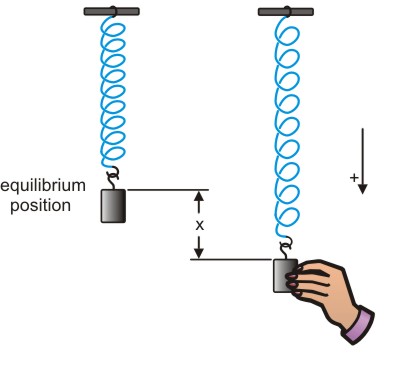
Oscillation is a type of harmonic motion, typically periodic, in one or more dimensions. Elastic property of the material is the most important aspect for a solid to oscillate. However, elasticity is the property of a solid to regain its shape. How can these cause oscillations? Let us consider a spring hanging vertically downward with one end fixed at the wall. The spring is in equilibrium (no external forces acting on it). When we displace the position of the free end of the spring upward (contracting) or downward (stretching), the restoring force comes into play and tends to bring back the spring to its equilibrium position imparting a negative velocity. Inertia on the other hand tries to oppose any change in velocity. When the body reaches the equilibrium position, the negative velocity is maximum producing a negative displacement. The body then overshoots the position of equilibrium. The restoring force is positive (in a direction opposite to the direction of restoring force considered before) and it must now overcome the inertia of negative velocity. The velocity keeps decreasing until it reaches zero but by this time the displacement becomes large and negative where again restoring force comes into play and the tussle ensues. Thus the oscillation of a physical system results from two basic properties elasticity and inertia.